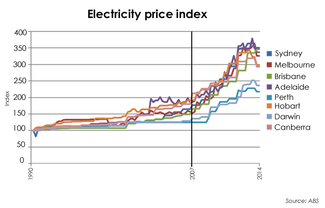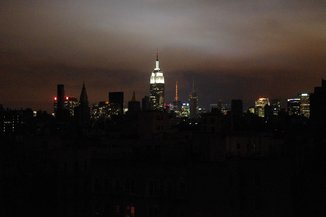|
10th April 2017
Strata Energy NewsThe Future of the Australian Energy Market
1. Market Power
The electricity generation market is dominated by large energy companies. They are being accused of manipulating the market by withdrawing capacity during periods of high demand, pushing prices of up to 180 times higher than average and gaining an additional $170-$190 million in revenue at the expense of consumers. These practices are apparently legal in Australia, although not allowed in other countries. 2. Network Monopolies The network costs in transmission and distribution of power to consumers have increased sharply in recent years, mainly due to an over investment in network infrastructures. The network operators benefit from over-investing because their revenue stream is derived from the amount invested into the grid. Over the past five years, around $45 billion of investments have been made and the cost is passed on to consumers. The networks defended their spending as necessary for replacing ageing infrastructure or supplying new regions, but a lot of that expenditure has been criticised as un-necessary. 3. Political Uncertainty The free market is designed to bring the cheapest form of energy into the market. Renewable power plants can reduce the cost of electricity as there is no fuel cost for their operation and they always bid at the lowest possible price on the energy market. Large-scale renewable projects were picking up the pace between 2010 and 2013. However, renewable investment was brought into a halt in 2014 after the election of a government that is averse to renewable energy. Nevertheless, the situation is starting to change as the energy debate in Australia has reached an inflexion point in recent weeks. We have seen the closure of the dirtiest power station in the country. The federal government has moved from launching direct attacks on renewable energy and is now talking of "dispatchable generation", which refers to renewable power plants that can be turned on or off to meet electricity demand. Proposed solutions include solar towers, battery storage, pumped hydro plants and many others. Moreover, the new chief executive of the Australian Energy Market Operator (AEMO), Audrey Zibelman, is signalling the biggest shift in energy management philosophy in a generation. Mrs Zibelman, the former head of New York’s Public Service Commission, was previously in charge of “Reforming the Energy Vision” after Superstorm Sandy devastated New York's grid network in 2012.
Electricity is an essential service that underpins our daily lives. Despite efforts by the government and regulators to ameliorate the challenges faced in the Australian electricity market, energy prices are still expected to climb up in the next few years. Wattblock has already identified an 80% increase in energy cost for a large strata complex in recent months. Owners Corporations cannot control energy prices for common areas. However, we can take control of our bills by actively reducing energy consumption through projects like LED lighting upgrades and solar installations.
For further reading try "Why the free market hasn’t slashed power prices" and "How AEMO’s new boss will reform Australia’s energy vision". Jacky Zhong Contributor, Strata Energy News Copyright © 2017 Investment Advantaged Software Pty Ltd, All rights reserved.
|
Services |
Company |
|



